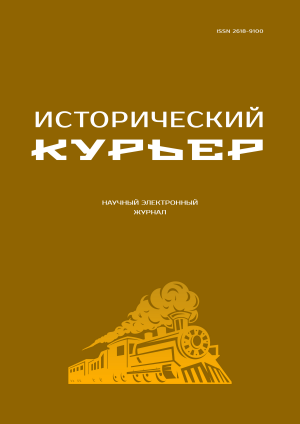This issue of the journal is devoted to the consideration of regional aspects of economic reforms in Russia/USSR in the 20th – early 21st centuries. The aim is to study the stages of economic reforms, as well as to trace the general and specific influence of the spatial factor on the ideas, implementation and results of transformations. The main attention is paid to the reconstruction of regional peculiarities of agrarian development, analysis of extra-economic factors of economic functioning, scientific comprehension of social consequences of reforming the national economy.
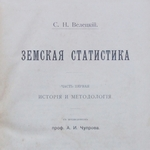 Reforms and Economic Development
Reforms and Economic Development
T.A. Savinova
Conditions and Prerequisites for the Emergence of Zemstvo Statistics: Economic and Financial Factors
The article deals with the economic tasks of the zemstvo reform on the formation of local economy and in this regard the difficulties in the formation of local budgets, the results of the work of the Tax Commission in 1859. It shows the imperfect methods of taxation of property income and the need to develop common criteria for its assessment by statisticians, who are beginning to be invited by the zemstvos to solve these problems. It is concluded that the research carried out by the statistical bureaus of zemstvos contributed to the development of criteria for property taxation, the creation of local budgets, the study of the economic situation of the provinces.
Publishing: 28/082024
How to cite: Savinova T.A. Conditions and Prerequisites for the Emergence of Zemstvo Statistics: Economic and Financial Factors // Historical Courier, 2024, No. 4 (36), pp. 11–20. [Available online: http://istkurier.ru/data/2024/ISTKURIER-2024-4-01.pdf]
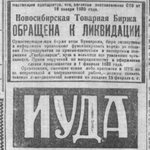 Reforms and Economic Development
Reforms and Economic Development
O.V. Il’inykh
Novosibirsk Commodity Exchange in 1926–1930: From Reorganization of the Exchange Network to Liquidation
The article discusses the functioning of the Novosibirsk Commodity Exchange in the conditions of the curtailment of the NEP in 1926–1930. The implementation of the “economy regime” campaign in 1926 led to the reorganization of the exchange network. As a result, Novosibirsk exchange became the only one in Siberia. It was found out that the organization implemented the tasks of regulating commodity-money relations and servicing the supply system in the context of the new political course. The author revealed the reasons for the liquidation of the Novosibirsk organization in 1930, as well as the institutional forms that reproduced some of the exchange functions after its closing.
The article was carried out within the framework of the topic of the state assignment of the Ministry of Education and Science of the Russian Federation “Socio-Economic Potential of the Eastern Regions of Russia in the 20th – Early 21st Centuries: Management Strategies and Practices, Dynamics, Geopolitical Context” (FWZM-2024-0005).
Publishing: 28/082024
How to cite: Il’inykh O.V. Novosibirsk Commodity Exchange in 1926–1930: From Reorganization of the Exchange Network to Liquidation // Historical Courier, 2024, No. 4 (36), pp. 21–33. [Available online: http://istkurier.ru/data/2024/ISTKURIER-2024-4-02.pdf]
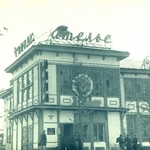 Reforms and Economic Development
Reforms and Economic Development
P.S. Grebenyuk
Development of Local Industry and Trade in the Magadan Region in 1953 – Early 1960s
The article examines the main trends in the development of local industry and trade in the Magadan Region in 1953 – the early 1960s. The difficulties of the transition period after the creation of the Magadan Region and the gradual transfer of functions from Dalstroy to local authorities are highlighted. The regional authorities undertook measures to create enterprises and expand consumer goods production. Problems with supplies and infrastructure persisted, but by the early 1960s, positive shifts in the development of local industry and trade are noted, which played a significant role in improving living standards of the population in the harsh climatic conditions of the Far North-East of the USSR.
Publishing: 28/082024
How to cite: Grebenyuk P.S. Development of Local Industry and Trade in the Magadan Region in 1953 – Early 1960s // Historical Courier, 2024, No. 4 (36), pp. 34–46. [Available online: http://istkurier.ru/data/2024/ISTKURIER-2024-4-03.pdf]
 Reforms and Economic Development
Reforms and Economic Development
A.S. Vashchuk
Social Consequences of Radical Liberal Reforms in the Magadan Region (1990s – Early 2000s)
The consequences of systemic reforms of the 1990s in the Magadan region are studied quantitatively and socio-anthropologically. The presence of all signs of “social trauma” has been proven in relation to the main principle of the outcome of the implementation of systemic reforms in the territory. The main traumatic factor has been identified – privatization. The recognition by the regional authorities of the situation of a humanitarian catastrophe, the depreciation of northern benefits, the emergence of new poverty and a new type of stratification, the ruination of villages, the reduction of employment in the extractive industries, a powerful outflow, and criminalization constituted the main features of the “society of trauma”.
Publishing: 28/082024
How to cite: Vashchuk A.S. Social Consequences of Radical Liberal Reforms in the Magadan Region (1990s – Early 2000s) // Historical Courier, 2024, No. 4 (36), pp. 47–59. [Available online: http://istkurier.ru/data/2024/ISTKURIER-2024-4-04.pdf]
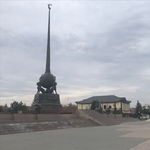 Reforms and Economic Development
Reforms and Economic Development
E.E. Tinikova
Urbanization of Tuva: Dynamics of Key Indicators (1944–2020)
The article analyzes the main directions of urbanization development of Tuva. It is noted that throughout the entire period under study Tuva differed markedly from other regions of Russia in terms of key indicators of urbanization. The key factors that influenced the dynamics of the number of urban population in general and individual types of urban settlements are studied. The paper traces the changes in the network of urban settlements in the region. It is shown that the formal and real level of urbanization in Tuva differ significantly.
Publishing: 28/082024
How to cite: Tinikova Е.Е. Urbanization of Tuva: Dynamics of Key Indicators (1944–2020) // Historical Courier, 2024, No. 4 (36), pp. 60–72. [Available online: http://istkurier.ru/data/2024/ISTKURIER-2024-4-05.pdf]
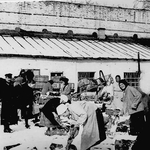 Non-economic Factors in the Economy
Non-economic Factors in the Economy
D.A. Mamontova
Discussions of the 1920s in Legal Circles on the Use of Forced Labor of Convicts
The paper is devoted to the analysis of coverage of the issue of forced labor in the legal press in the 1920s. Throughout the entire period under study, there were problems in the organization of this type of punishment, which prompted justice officials to propose various solutions. In 1922, the mildest proposals were made, for example, the organization of physical work. But these measures didn’t solve the existing of difficulties which led first to hushing up this topic, and then to the expression of the most radical ideas in the form of using convicts’ labor free of charge. Later, this principle was reflected in the resolution of VTsIK and the Council of People’s Commissars of the RSFSR dated 28 March 1928, which marked a turn towards harsh forms of using prison labor.
Publishing: 28/082024
How to cite: Mamontova D.A. Discussions of the 1920s in Legal Circles on the Use of Forced Labor of Convicts // Historical Courier, 2024, No. 4 (36), pp. 73–83. [Available online: http://istkurier.ru/data/2024/ISTKURIER-2024-4-06.pdf]
 Non-economic Factors in the Economy
Non-economic Factors in the Economy
R.E. Romanov
The Turn to Coercion in the USSR on June 26, 1940: Reading at the Junction of Global and National History
The article is devoted to the analysis of the decree of June 26, 1940 as a criminal law mechanism for forcing workers and employees to indefinitely fulfill civil employment contracts in the Soviet industry. Based on the interdisciplinary synthesis of the global and national history of labor relations, it is concluded that in the Modern era this phenomenon was already an obvious social atavism. At the same time, under the conditions of Stalin’s early industrial modernization and the Second World War, he experienced a rebirth and acquired explosive dynamics.
The work was carried out on the topic of the state task “Socio-Economic Potential of the Eastern Regions of Russia in the 20th – Early 21st Centuries: Management Strategies and Practices, Dynamics, Geopolitical Context” (FWZM-2024-0005).
Publishing: 28/082024
How to cite: Romanov R.E. The Turn to Coercion in the USSR on June 26, 1940: Reading at the Junction of Global and National History // Historical Courier, 2024, No. 4 (36), pp. 84–101. [Available online: http://istkurier.ru/data/2024/ISTKURIER-2024-4-07.pdf]
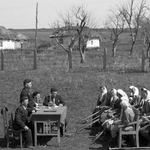 Non-economic Factors in the Economy
Non-economic Factors in the Economy
O.N. Argunov
Some Aspects of the Struggle for “Socialist Legality” in Agriculture in the Regions of the Central Black Earth Region in the First Post-War Years
Modern domestic historiography is just beginning to comprehend the concept of “socialist legality” in relation to the period of Soviet history after 1936. This article makes an attempt to characterize the problem of compliance with “socialist legality” in the agricultural sector of the Central Black Earth Region in the post-war years through the prism of the fight against the theft of collective farm and state property. A representative sample of different types of historical sources allows us to draw a conclusion about the contradictory nature of the course and results of this process.
Publishing: 28/082024
How to cite: Argunov O.N. Some Aspects of the Struggle for “Socialist Legality” in Agriculture in the Regions of the Central Black Earth Region in the First Post-War Years // Historical Courier, 2024, No. 4 (36), pp. 102–111. [Available online: http://istkurier.ru/data/2024/ISTKURIER-2024-4-08.pdf]
 Museumification of the Economy
Museumification of the Economy
L.N. Mazur
Economy as an Object of Museumification: From the Experience of Studying Industry and Corporate Museums of Small Towns in Russia
The article discusses various options for the museumification of economic objects – a factory-museum, a museum complex, a museum-reserve, a technology park, an industrial museum. A special place in this series is occupied by corporate museums created within the structure of enterprises and organizations. In addition to commemorative functions, they perform representative functions, combining the tasks of preserving the history of the enterprise and presenting the products it produces. The article is based on materials obtained during field research conducted in 2021–2023 in a number of small towns in Russia.
The topic was supported by a grant from the Russian Science Foundation 21-18-00418 “Museum of a Small Town: Multiplicity of Memory Cultures (Historical and Sociological Analysis)”.
Publishing: 28/082024
How to cite: Mazur L.N. Economy as an Object of Museumification: From the Experience of Studying Industry and Corporate Museums of Small Towns in Russia // Historical Courier, 2024, No. 4 (36), pp. 112–129. [Available online: http://istkurier.ru/data/2024/ISTKURIER-2024-4-09.pdf]
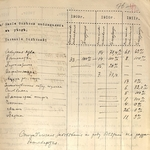 Agricultural Development
Agricultural Development
V.A. Sablin, S.A. Lebedev, S.V. Timoshina
Epizootics and the Development of Cattle Breeding in the Vologda Province in the Late 19th – Early 20th Centuries
The work analyzed the most dangerous and widespread epizootics in the Vologda province in the late 19th – early 20th centuries, the factors of their spread, measures taken to combat them, as well as the impact of animal diseases on the development of cattle breeding in the region. It was established that the fight against the spread of epizootics was hampered by the concealment of sick cattle by peasants, the small number of veterinary personnel, the presence of stationary sources of diseases, and the impossibility of diagnosing sick cattle before death.
The study was conducted within the framework of project No. 23-28-00860 “Autochthonous Factors of the Creation of the Vologda Dairy Brand in Retrospect of the Development of Animal Husbandry in the European North of Russia in the 20th–21th Centuries”, supported by the Russian Science Foundation.
Publishing: 28/082024
How to cite: Sablin V.А., Lebedev S.A., Timoshina S.V. Epizootics and the Development of Cattle Breeding in the Vologda Province in the Late 19th – Early 20th Centuries // Historical Courier, 2024, No. 4 (36), pp. 130–137. [Available online: http://istkurier.ru/data/2024/ISTKURIER-2024-4-10.pdf]
 Agricultural Development
Agricultural Development
V.V. Kondrashin
Makhnovshchina
This article attempts to systematize the knowledge available in historiography on the history of the peasant movement in Ukraine during the Civil War, known as the Makhnovshchina. The emphasis is placed on the most important aspects of the problem, which allow us to better understand the phenomenon of Makhnovshchina in the context of the all-Russian peasant insurgency in the period under review. Its main differences from other peasant insurgent movements during this period were the creation of a combat-ready, regular peasant army, as well as the participation in the movement of the most active members of the anarchist party.
The article was prepared as part of the project of the Institute of Russian History of the Russian Academy of Sciences for writing a multivolume academic work “History of Russia”. Published for testing purposes.
Publishing: 28/082024
How to cite: Kondrashin V.V. Makhnovshchina // Historical Courier, 2024, No. 4 (36), pp. 138–150. [Available online: http://istkurier.ru/data/2024/ISTKURIER-2024-4-11.pdf]
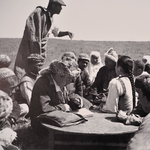 Agricultural Development
Agricultural Development
G.U. Orynbayeva
Kazakh Collective Farm Village in the 1930s
The article studies the formation of the collective farm system in the 1930s in the conditions of Kazakhstan, which had specific economic and cultural features. It is shown how the process of transition to sedentarization, economic and cultural break, modernization policy of the Soviet power and other factors influenced the development of Kazakh collective farm aul. The adaptive practices of Kazakh rural society under the conditions of forced collectivization and "cultural revolution" policy imposed by the Soviet state are considered.
Publishing: 28/082024
How to cite: Orynbayeva G.U. Kazakh Collective Farm Village in the 1930s // Historical Courier, 2024, No. 4 (36), pp. 151–162. [Available online: http://istkurier.ru/data/2024/ISTKURIER-2024-4-12.pdf]
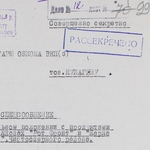 Agricultural Development
Agricultural Development
S.V. Sharapov
“…Well, Brother Vasya, I Have to Die Here, in Siberia”: Famine in Rural Areas of the Novosibirsk Region in the 1940s
The article analyzes the complex of factors that repeatedly led to outbreaks of famine in rural areas of the Novosibirsk region in the 1940s. The features of localization of the food problem within the region are shown. Vulnerability to famine was a consequence of both the increased mobilization pressure on the collective farm village and the long-term effects of the state agrarian policy of the 1930s. Rural residents remained the least protected category of the population, which did not receive any guarantees of survival from the state.
The work was carried out on the topic of the state task “Socio-Economic Potential of the Eastern Regions of Russia in the 20th – Early 21st Centuries. Management Strategies and Practices, Dynamics, Geopolitical Ccontext” (FWZM-2024-0005).
Publishing: 28/082024
How to cite: Sharapov S.V. “…Well, Brother Vasya, I Have to Die Here, in Siberia”: Famine in Rural Areas of the Novosibirsk Region in the 1940s // Historical Courier, 2024, No. 4 (36), pp. 163–176. [Available online: http://istkurier.ru/data/2024/ISTKURIER-2024-4-13.pdf]
 Agricultural Development
Agricultural Development
R.V. Pavlyukevich
Dynamics of Livestock Breeding Development in Krasnoyarsk Krai in 1953–1964
The article analyzes the dynamics of livestock breeding in Krasnoyarsk Krai in 1953–1964. In the conditions of urban population growth there was a need for intensification of animal husbandry. It was required to create an independent industry capable of providing Krasnoyarsk region with livestock products. The local authorities made efforts to increase the number of livestock and production, but it was not possible to solve the problems existing in the industry completely. Its development was mainly extensive, production could not keep up with the growth of population needs, and the industry itself remained unprofitable.
Publishing: 28/082024
How to cite: Pavlyukevich R.V. Dynamics of Livestock Breeding Development in Krasnoyarsk Krai in 1953–1964 // Historical Courier, 2024, No. 4 (36), pp. 177–189. [Available online: http://istkurier.ru/data/2024/ISTKURIER-2024-4-14.pdf]
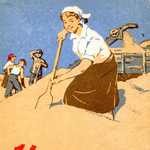 On the 70th Anniversary of the 1954 Virgin Campaign
On the 70th Anniversary of the 1954 Virgin Campaign
S.N. Andreenkov
Prerequisites, Results and Significance of the Development of Virgin and Fallow Lands in the USSR
The author considers the background, course, results and significance of the campaign to develop virgin and fallow lands, conducted in the eastern regions of the USSR in 1954–1960s. The historiography of the problem is characterized. The thesis is substantiated that due to the extremely low quality of grain supplied to the state there was a threat of disruption of the normal supply of bread products to the population. A note by the Minister of Grain Products of the RSFSR N.E. Proshunin revealing the problem of acceptance and storage of grain harvested from the fields in virgin regions is introduced.
The work was carried out on the topic of the state task “Socio-Economic Potential of the Eastern Regions of Russia in the 20th – Early 21st Centuries. Management Strategies and Practices, Dynamics, Geopolitical Context” (FWZM-2024-0005).
Publishing: 28/082024
How to cite: Andreenkov S.N. Prerequisites, Results and Significance of the Development of Virgin and Fallow Lands in the USSR // Historical Courier, 2024, No. 4 (36), pp. 190–203. [Available online: http://istkurier.ru/data/2024/ISTKURIER-2024-4-15.pdf]
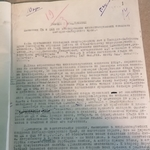 Open Archives. Sources on Agrarian History
Open Archives. Sources on Agrarian History
A.A. Plyasulya
Survey of Livestock State Farms of Western Siberia at the and of 1931: Conclusions and Proposals
The report of the commission of the Central Committee and the CCC of the All-Union Communist Party (of Bolsheviks), prepared on the results of the survey of livestock state farms of the West Siberian region at the end of December 1931, is introduced into the scientific circulation. The document contains a list of identified shortcomings and problems, as well as proposals to improve the performance of farms. A survey of the socio-economic situation of state farms was also conducted in other regions of the country. The generalization of the obtained materials served as a basis for adjusting the policy of the Soviet state in the sphere of state farm construction.
Publishing: 28/082024
How to cite: Plyasulya А.A. Survey of Livestock State Farms of Western Siberia at the and of 1931: Conclusions and Proposals // Historical Courier, 2024, No. 4 (36), pp. 204–220. [Available online: http://istkurier.ru/data/2024/ISTKURIER-2024-4-16.pdf]
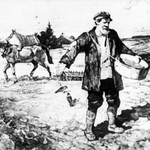 Open Archives. Sources on Agrarian History
Open Archives. Sources on Agrarian History
V.A. Il’inykh
Individual Peasants in Siberia in 1933–1934: Factors and Methods of Social Adaptation
Five information notes of the secretaries of the district committees of VKP(b) to the West Siberian Krai Committee and a report note of the Krai Committee and the Krai Executive Committee to the Central Committee of VKP(b), found in the State Archive of the Novosibirsk Region, are introduced into the scientific circulation. The published documents were compiled within the framework of the survey of the socio-economic situation of the individual peasantry of the West Siberian region conducted in the first half of 1934. They record the main factors and methods that enabled the individual peasants to adapt to the existing political and economic conditions.
The study was carried out at the expense of a grant from the Russian Science Foundation No. 24-28-00100 “Social Adaptation of the Siberian Peasantry in the Late 1920s – the First Half of the 1960s: Mechanisms, Forms, Results”.
Publishing: 28/082024
How to cite: Il’inykh V.А. Individual Peasants in Siberia in 1933–1934: Factors and Methods of Social Adaptation // Historical Courier, 2024, No. 4 (36), pp. 221–241. [Available online: http://istkurier.ru/data/2024/ISTKURIER-2024-4-17.pdf]
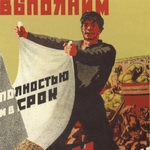 Open Archives. Sources on Agrarian History
Open Archives. Sources on Agrarian History
V.B. Laperdin
At the Telegraph Comrade Eiche: Inspection of Grain Procurement in the West Siberian Region in 1935
The record of a direct wire conversation between the secretary of the West Siberian Regional Committee R.I. Eikhe and the chairman of the Regional Executive Committee F.P. Gryadinsky is introduced into scientific circulation. The source is a part of the records related to the bread procurement campaign of 1935. Eikhe inspected the south-western districts of the region, where the rate of procurement had decreased. Having ascertained the objective causes of the crisis (drought-induced poor harvest) Eiche proposed to carry out a number of measures to reduce the tax burden on unharvested areas, as well as to petition the Center for food aid to the region.
The work was carried out on the topic of the state task “Socio-Economic Potential of the Eastern Regions of Russia in the 20th – Early 21st Centuries. Management Strategies and Practices, Dynamics, Geopolitical Context” (FWZM-2024-0005).
Publishing: 28/082024
How to cite: Laperdin V.В. At the Telegraph Comrade Eiche: Inspection of Grain Procurement in the West Siberian Region in 1935 // Historical Courier, 2024, No. 4 (36), pp. 242–252. [Available online: http://istkurier.ru/data/2024/ISTKURIER-2024-4-18.pdf]
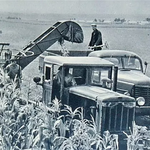 Open Archives. Sources on Agrarian History
Open Archives. Sources on Agrarian History
D.S. Orlov
Development of Agricultural Production in Kuzbass in The Second Half of the 1960s (Analytical Note of the Regional Statistics Department of the Kemerovo Region)
An analytical note from the statistics department of the Kemerovo region is being introduced into scientific circulation, in which the results of the economic and financial activities of Kuzbass collective farms for 1970 are analyzed. The text of the document notes the generally successful production results of the region’s collective farms for the year. The drafters of the note paid considerable attention to the identified shortcomings in the activities of collective farms: lagging behind in potato growing, vegetable growing and feed production, insufficient mechanization of production processes in livestock farming, and high production costs.
Publishing: 28/082024
How to cite: Orlov D.S. Development of Agricultural Production in Kuzbass in The Second Half of the 1960s (Analytical Note of the Regional Statistics Department of the Kemerovo Region) // Historical Courier, 2024, No. 4 (36), pp. 253–265. [Available online: http://istkurier.ru/data/2024/ISTKURIER-2024-4-19.pdf]
 Scientific Life
Scientific Life
O.V. Il’inykh, M.A. Kositsin
All-Russian Scientific Conference “Industrial Development of Russia: Stages, Features, Prospects of Study”
The article is an overview of the All-Russian Scientific Conference “Industrial Development of Russia: Stages, Features, Prospects of Study” that was held in June 2024 on the basis of the Institute of History and the Institute of Economics and Organization of Industrial Production of SB RAS. The event brought together specialists in the field of economic and social history, who considered the problems of industrial transformations in Russia in a broad chronological framework. The review provides information on reports on the history of Russian and Soviet industrialization and on the discussion which took place at the round table.
The message was made within the framework of the topic of the state assignment of the Ministry of Education and Science of the Russian Federation “Socio-Economic Potential of the Eastern Regions of Russia in the 20th – Early 21st Centuries: Management Strategies and Practices, Dynamics, Geopolitical Context” (FWZM-2024-0005).
Publishing: 28/082024
How to cite: Il’inykh O.V., Kositsin M.A. All-Russian Scientific Conference “Industrial Development of Russia: Stages, Features, Prospects of Study” // Historical Courier, 2024, No. 4 (36), pp. 266–272. [Available online: http://istkurier.ru/data/2024/ISTKURIER-2024-4-20.pdf]



